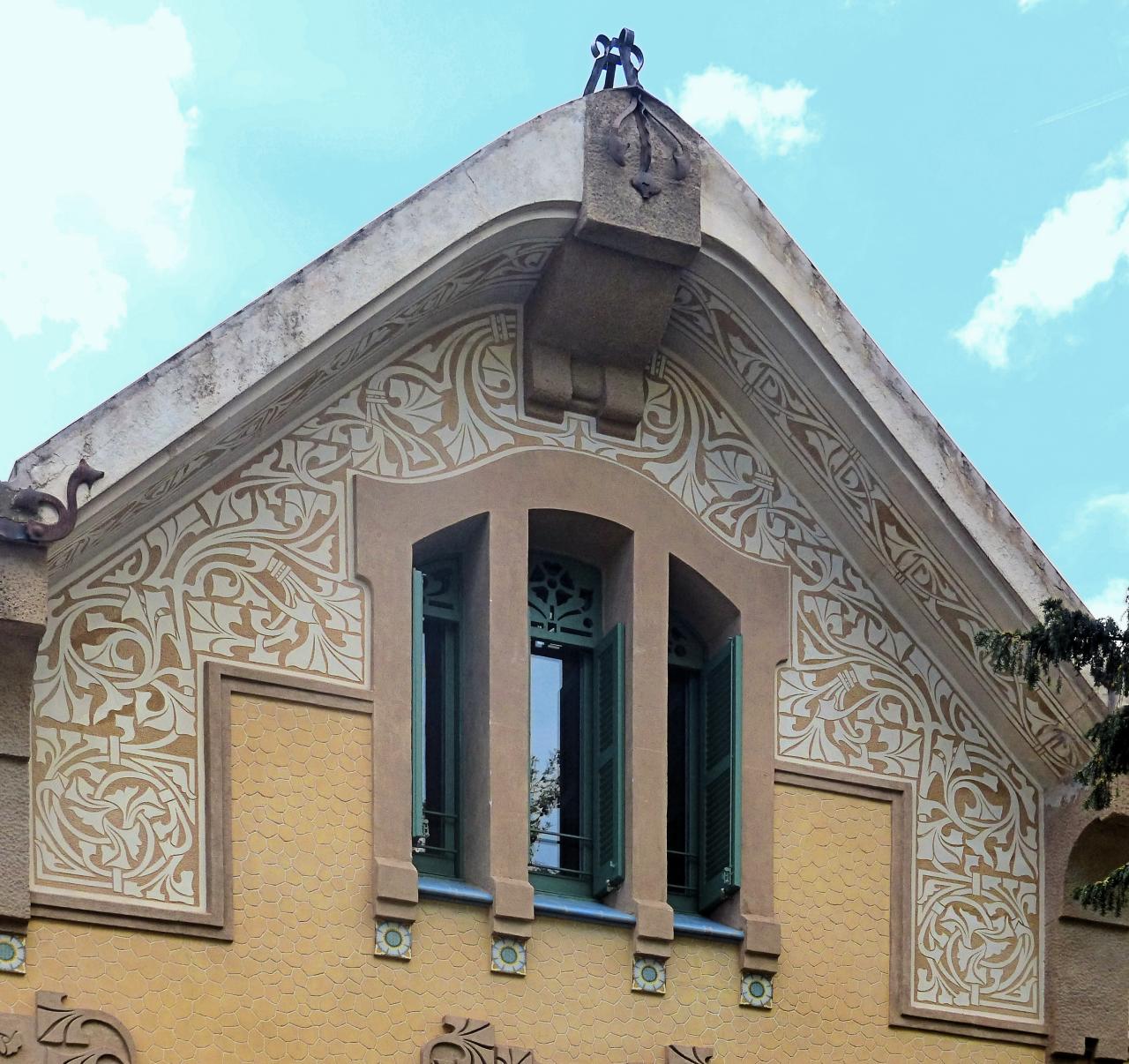#1258. Elegant Art Nouveau Facade with Floral Sgraffito Ornamentation
The image shows a fragment of a building facade in the Art Nouveau style, characteristic of the late 19th and early 20th centuries. The pediment of the building is decorated with exquisite floral ornaments executed in the sgraffito technique — the design is created by scratching the upper layer of plaster to reveal the lower layer, creating a contrasting pattern.
The upper part of the facade displays smooth, flowing lines typical of Art Nouveau, which elegantly frame the pediment. The combination of a beige background with cream ornamental motifs creates a particular expressiveness. In the central part, there are three tall windows with green frames, giving the facade a rhythmic quality and organizing its composition.
The lower part of the facade is covered with yellow hexagonal tiles, which enhances the decorative nature and creates an interesting contrast with the upper section. Below the windows, there are small decorative inserts with geometric ornaments — a characteristic technique for architecture of this period.
The pediment is crowned with a small architectural element, possibly a metal decoration, which was typical for Art Nouveau buildings in Central and Eastern Europe. The overall composition demonstrates a harmonious combination of functionality and decorativeness, characteristic of turn-of-the-century architecture.
